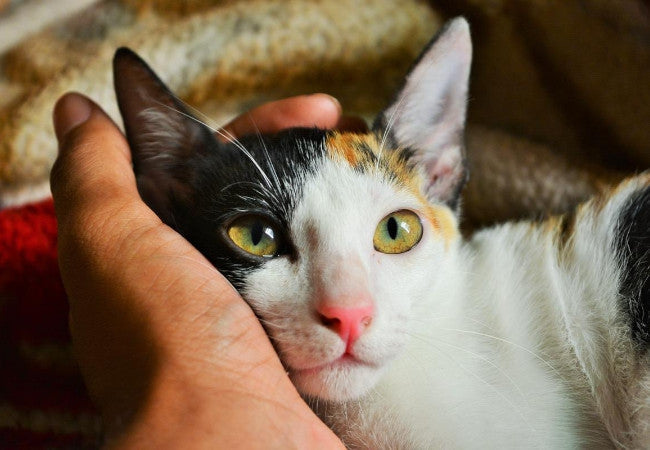Medicating your cats can be a daunting prospect, but with a calm and confident approach, it is often much easier. Follow these tips when administering a pill to your cats:
By hand
1. Prepare a safe place to handle your cats and have the pill ready, along with a treat to make the experience more pleasant for your cats.
2. Place your cats in your lap and wrap them securely in a blanket or towel with only their head exposed.
3. Hold the pill between your thumb and index finger.
4. Gently grasp your cats' head from above with your other hand, by placing your thumb on one side of the upper jaw and your fingers on the other. Tilt your cats' head back over their shoulder and direct their nose to the ceiling, causing them to slightly open their lower jaw.
5. Use your little finger and ring finger to open your cats' mouth further by gently putting pressure on the lower lip and front teeth.
6. Quickly place the pill as far back over the tongue as possible.
7. Gently rub your cats' nose or throat, or blow lightly on their nose, encouraging them to swallow.
8. Be sure to reward your cats with the treat afterwards.
With food
If the pill is small, you may try hiding it in a small amount of favourite food, such as soft cat food that your cats really like, a small piece of soft meat or fish. This can be especially useful for very wriggly cats.
A pill popper
Alternatively, you can use a pill popper.
1. Let your cats sniff and get familiar with the device before you use it.
2. Once you're ready, open your cats' mouth, making sure your cats' head is facing the ceiling. This will allow the pill to effectively be swallowed by them.
3. Place the shooter gently into the back of the mouth, and plunge it to administer the pill.
4. Hold your cats' mouth closed, stroking their throat until they swallow the pill. To help your cats swallow the pill, you can give them some water or chicken broth to make sure the pill doesn't just sit in the esophagus.
Source: PetMD
Featured image by Amiya Nanda

